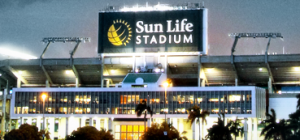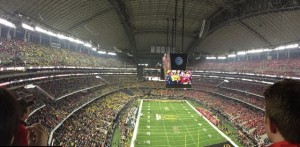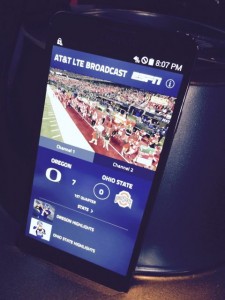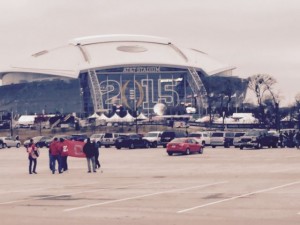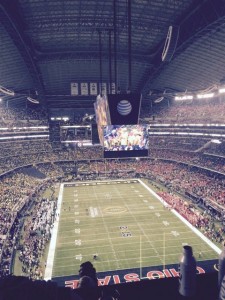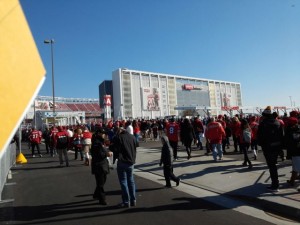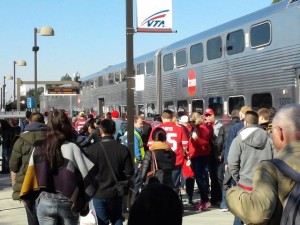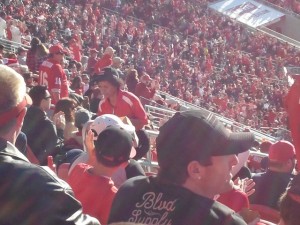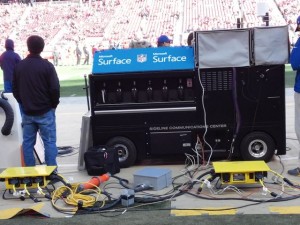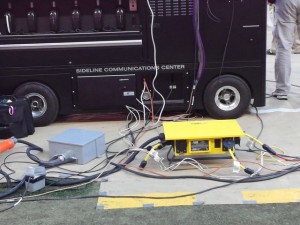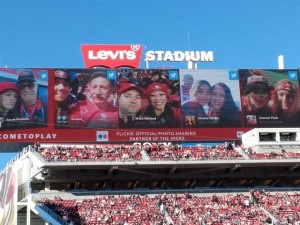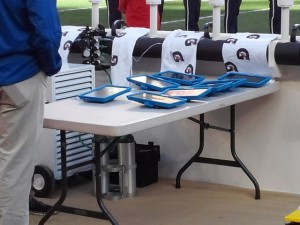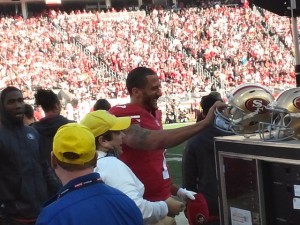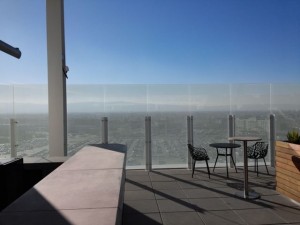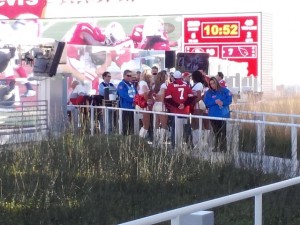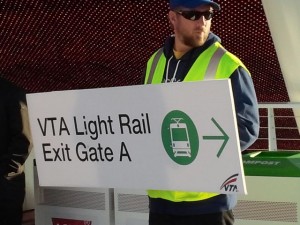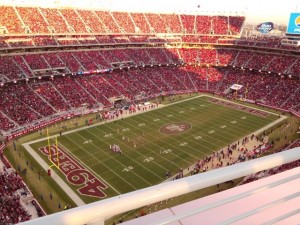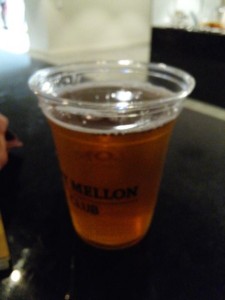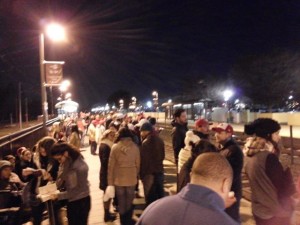 The Wi-Fi network that debuted in CenturyLink Field this season had its highest Wi-Fi traffic day last weekend, when 2.6 terabytes of data was carried during the Seattle Seahawks’ Jan. 10 playoff victory over the Carolina Panthers.
The Wi-Fi network that debuted in CenturyLink Field this season had its highest Wi-Fi traffic day last weekend, when 2.6 terabytes of data was carried during the Seattle Seahawks’ Jan. 10 playoff victory over the Carolina Panthers.
According to the Seahawks’ tech staff, 18,899 of the 68,524 fans in attendance used the Wi-Fi network at some point, with a peak concurrent user mark of 15,662. The peak bandwidth utilization of 1.4 Gbps was reached just after Cam Chancellor sealed the win with his electric 90-yard interception touchdown return, the Seahawks tech staff said.
The Wi-Fi numbers represent traffic on both of the separate Wi-Fi networks in the stadium, one of which is reserved exclusively for Verizon Wireless customers. Verizon, which has declined to comment publicly on the specifics of its partnership with the Seahawks, is believed to have bankrolled a major portion of the Wi-Fi deployment at CenturyLink. Before the Wi-Fi partnership between the Seahawks, Wi-Fi gear provider Extreme Networks and Verizon was officially announced on Oct. 29, Verizon claimed it had “added an in-stadium Wi-Fi system” at CenturyLink prior to the start of the 2014 football season, as part of a national football stadium Wi-Fi map Verizon published on Sept. 4. The Wi-Fi deployment was somewhat of a surprise, since team officials had long said they were looking at 2015 as the year they might pull the trigger on a Wi-Fi expenditure. Apparently, having available funding from Verizon helped push the project forward faster than expected; but again, we have no official confirmation or explanation of the exact fiscal participation level of all the partners involved.
For Seattle fans, having Verizon as a Wi-Fi partner has additional perks — in addition to a separate Wi-Fi network for Verizon customers, all fans at the stadium also have access to the NFL Network’s popular RedZone channel, via the new Seahawks stadium app created by YinzCam. Because of various conflicting rights contracts, RedZone isn’t available in most stadiums for fans to watch. The Seahawks also have a number of live-action and replay views available via the app; however, the stadium’s tech team did not have any metrics on fan use of the app or the number of video replays watched.
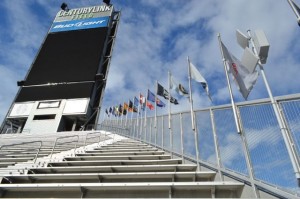
Wi-Fi access point antennas visible on poles at CenturyLink Field, Seattle. Credit: Extreme Networks
Verizon executives were also conspicuously absent from a stadium-technology event centered on the Wi-Fi network earlier this week, leading some reports to omit Verizon’s considerable participation in the network’s deployment, something NFL CIO Michelle McKenna-Doyle told MSR about earlier this year.
Though no statistics were available from Verizon about the DAS deployment it also put in at CenturyLink Field this year, AT&T did share some DAS stats from CenturyLink for the Seahawks’ Dec. 14 victory over the San Francisco 49ers. During that game, AT&T customer traffic on the AT&T DAS at CenturyLink was 395 GB, according to AT&T. It will be interesting to see how much wireless traffic this weekend’s NFC championship game between the Seahawks and the Packers will generate — we’ll track down as much of it as we can to see if it compares to the 6 TB mark set at the recent College Football Playoff championship game at AT&T Stadium in Arlington, Texas.
